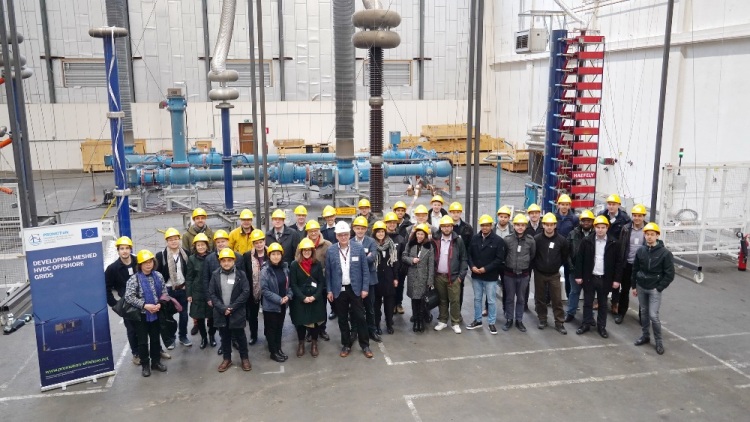Full-scale testing of HVDC circuit breakers and HVDC GIS has been successfully conducted and demonstrated at KEMA Labs, a release from CESI said.
Due to the crucial role of offshore HVDC grids, newly developed test methods and circuits are used to demonstrate the increased TRL (Technology Readiness Level) of HVDC circuit breakers and HVDC GIS
Both activities – the live fault current interruption of a hybrid HVDC circuit breaker and the operation testing of the HVDC GIS – were carried out at Arnhem KEMA Labs. In addition, after workshops on the technologies and test methods, relevant stakeholders (TSOs, project developers, etc.) were invited in the laboratories for a face-to-face meeting with state-of-the-art equipment and laboratory technology.
Due to the crucial role of offshore HVDC grids, newly developed test methods and circuits are used to demonstrate the increased TRL (Technology Readiness Level) of HVDC circuit breakers and HVDC GIS, such as the cutting-edge full-scale testing conducted at KEMA Labs. This was a particularly fundamental activity, as a meshed European offshore HVDC grid can provide significant benefits to the European energy market and decarbonization as part of European Green Deal. The Horizons 2020 European project PROMOTioN (Progress on Meshed HVDC Offshore Transmission Networks) seeks to develop such a grid, with HVDC switchgear as key equipment for the protection and operation. In order to achieve such objectives, however, the TRL of this equipment needs to be increased towards the full-scale prototype performance demonstration level.
It may be noted that the ownership of KEMA Labs changed from DNV GL to CESI, in October 2019.
HVDC circuit breakers are, in fact, believed to play an important role in realizing high availability and low losses in multi-terminal HVDC grids. Several technology concepts have been developed by manufacturers, but thus far no HVDC circuit breakers have been installed in Europe. In our project, critical parameters have been defined along with a set of test-requirements regarding fault current interruption capability. These test requirements are agreed among three manufacturers of different technologies of HVDC circuit breakers: Mitsubishi Electric, ABB and SciBreak. In the present stage of the project, the active current injection technology has been demonstrated at KEMA high-power Labs Arnhem up to 16 kA, 160 kV whereas hybrid technology was demonstrated at fault current of 20 kA at 350 kV. The unique aspect of these tests is the application of multiple short-circuit generators at 16⅔ Hz and step-up transformers to realize an adequate DC-like window of opportunity. A very large direct power is essential to verify the energy absorption capability (up to 30 MJ) since the usual synthetic test method cannot be applied for HVDC breakers.
HVDC GIS is essential to reduce the footprint of HVDC switchgear and increase reliability.
HVDC GIS, on the other hand, is essential to reduce the footprint of HVDC switchgear and increase reliability. IN KEMA HVDC Lab in Arnhem, one-year duration tests of an ABB’s 320kV HVDC GIS are going on under full load cycles of current (4000 A) and voltage (420kV DC), with verification of, among other, superimposed impulse voltage withstand (lightning impulse 940kVpeak and switching impulse 760kVpeak) and no-load switching at intermediate stages. Various innovative measurements techniques of partial discharges are applied, among other additional research on novel online monitoring and evaluation (Delft University) and the impact of various SF6 gas alternatives (Supergrid Institute).
It may be noted that the ownership of KEMA Labs changed from DNV GL to CESI, in October 2019.

